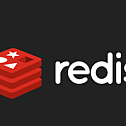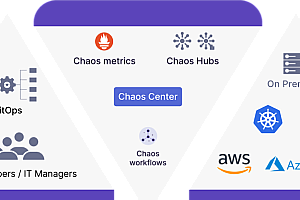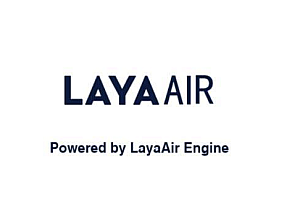This issue recommends a Redis multi-data center replication management system developed by Ctrip’s framework department — X-Pipe.

Redis has been widely used inside Ctrip. According to client data statistics, the read and write requests of all Redis in Ctrip are 2000W per second, of which the write requests are about 100W. Many businesses even use Redis as a persistent memory database. In this way, Redis multi-data centers are in great demand. One is to improve availability and solve the Disaster Recovery (DR) problem of data centers; the other is to improve access performance. Each data center can read the data of the current data center without cross-room reading. XPipe was born.
For ease of description, DC is used to represent the Data Center.
Overall structure

- Console The console is used to manage the metadata data of multiple equipment rooms and provides a user interface for configuration and DR Switching.
- Keeper caches Redis operation logs and compresses and encrypts cross-room transmission.
- Meta Server manages all keeper status in a single room and corrects abnormal status.
Redis data replication problem
The first thing to solve in a multi-data center is the data replication problem, that is, how data is transferred from one DC to another DC. We decided to adopt the pseudo-slave scheme, that is, to implement the Redis protocol, pretend to be a Redis slave, and let the Redis master push data to the pseudo-slave. This pseudo-slave, which we call keeper, is shown below:

Advantages of using keeper :
- Reduce master full synchronization
If the slave in the remote equipment room is directly connected to the master, multiple slaves will cause the master to fully synchronize multiple times, and the keeper can cache rdb and replication log. The slave in the remote equipment room directly obtains data from the keeper to enhance the stability of the master.
- Reduce multi-data center network traffic
Between two data centers, data needs to be transmitted only once through keeper, and the transmission protocol between keeper can be customized to facilitate compression (currently not supported).
- Reduce full synchronization when network exception
keeper caches Redis log data to disk, so that a large amount of log data can be cached (Redis caches data to the memory ring buffer, the capacity is limited). If the network between data centers is abnormal for a long time, log data can still be transmitted.
- Security improvement
data transmission between multiple computer rooms often needs to be carried out through the public network, so the security of data becomes extremely important. Data transmission between keeper can also be encrypted (not yet realized) to improve security.
Equipment Room Switching process
- Check if you can switch DR
Similar to the 2PC protocol, prepare first to ensure that the process can proceed smoothly.
- The original master cannot write
This step ensures that there is only one master during the migration process to resolve possible data loss during the migration process.
- Upgrade new master
- Synchronize other equipment rooms to the new main equipment room
Both rollback and retry functions are provided. The rollback function can be rolled back to the original state. The retry function can repair abnormal conditions and continue the switchover when the DBA manually intervenes.
High availability
High availability of XPipe system
If keeper fails, data transmission between DCS may be interrupted. To solve this problem, keeper has two active and standby nodes, and the standby node copies data from the active node in real time. When the active node fails, the standby node will be promoted to the active node to replace the active node.
The promotion operation needs to be carried out through a third-party node, which we call MetaServer, which is mainly responsible for the transformation of keeper status and the storage of meta information in the equipment room. At the same time, MetaServer should also be highly available: each MetaServer is responsible for a specific Redis cluster. When a MetaServer node fails, its Redis cluster will be replaced by another node. If a new node is added to the entire cluster, load balancing is automatically performed and part of the cluster is transferred to the new node.
High availability of Redis itself
Redis may also fail, and Redis itself provides a Sentinel mechanism to ensure high availability of the cluster. However, before Redis4.0, after a new master is promoted, other nodes will perform full synchronization after connecting to the master. During full synchronization, the slave will be unavailable. The master will export the rdb, reducing the availability of the master. At the same time, a large amount of data (RDB) is transmitted in the cluster, which will lead to the instability of the whole system.
Up to the time of writing, 4.0 still has not been released, and the Redis version used by Ctrip internally is 2.8.19, if it is upgraded to 4.0, the version span is too large, based on this, We optimized the version of Redis3.0.7 to implement the psync2.0 protocol and achieve incremental synchronization.

Test data
Test scheme
The test method is shown in the figure below. Data is sent from the client to the master and the slave notifies the client through keyspace notification. The test delay is t1+t2+t3.

Test data
First, we test the delay of Redis master copying directly to slave, which is 0.2ms. Then add a layer of keeper between master and slave, and the overall delay increases by 0.1ms to 0.3ms.
The test was carried out in the production environment of Ctrip, and the ping RTT between the two machine rooms in the production environment was about 0.61ms. After the two-layer keeper across the data center, the average delay obtained by the test was about 0.8ms, and the delay of 99.9 lines was 2ms.
docker Quick start
1 Start preparation
-
- Need to start docker process in advance, and Docker-compose
is supported
- Create a path and start from it (recommended)
2 Start docker
- Method 1: Start the image on dockerhub
/bin/bash -c "$(curl -sSL https://raw.githubusercontent.com/ctripcorp/x-pipe/master/redis/dockerPackage/start-xpipe-container.sh)"</ code>Container distribution after startup
Run the command: docker ps -a
CONTAINER ID IMAGE COMMAND CREATED STATUS PORTS NAMES
1e77491414a9 ctripcorpxpipe/xpipe-console:1.0 "docker-entrypoint.sh" 3 days ago Up 3 days 0.0.0.0:8079->8080/tcp, :::8079->8080/tcp consolejq
6694f9eff0ad ctripcorpxpipe/xpipe-console:1.0 "docker-entrypoint.sh" 3 days ago Up 3 days 0.0.0.0:8081->8080/tcp, :::8081->8080/tcp consoleoy
aa0d109c7aae ctripcorpxpipe/xpipe-meta:1.0 "docker-entrypoint.sh" 3 days ago Up 3 days 0.0.0.0:9747->8080/tcp, :::9747->8080/tcp metajq
0c6cb6dfe51f ctripcorpxpipe/xpipe-meta:1.0 "docker-entrypoint.sh" 3 days ago Up 3 days 0.0.0.0:9748->8080/tcp, :::9748->8080/tcp metaoy
0e0f78ae096d ctripcorpxpipe/xpipe-keeper:1.0 "docker-entrypoint.sh" 3 days ago Up 3 days 0.0.0.0:7080->8080/tcp, :::7080->8080/tcp keeperjq1
16c5fdd14a5e ctripcorpxpipe/xpipe-keeper:1.0 "docker-entrypoint.sh" 3 days ago Up 3 days 0.0.0.0:7081->8080/tcp, :::7081->8080/tcp keeperjq2
1915292f3a7f ctripcorpxpipe/xpipe-keeper:1.0 "docker-entrypoint.sh" 3 days ago Up 3 days 0.0.0.0:7180->8080/tcp, :::7180->8080/tcp keeperoy1
0c885945d8f3 ctripcorpxpipe/xpipe-keeper:1.0 "docker-entrypoint.sh" 3 days ago Up 3 days 0.0.0.0:7181->8080/tcp, :::7181->8080/tcp keeperoy2
15062ab45feb ctripcorpxpipe/xpipe-proxy:1.0 "docker-entrypoint.sh" 3 days ago Up 3 days 0.0.0.0:19079->80/tcp, :::19079->80/tcp, 0.0.0.0:19442->443/tcp, :::19442->443/tcp, 0.0.0.0:8092->8080/tcp, :::8092->8080/tcp proxyjq
ed38daf8e71e ctripcorpxpipe/xpipe-proxy:1.0 "docker-entrypoint.sh" 3 days ago Up 3 days 0.0.0.0:19081->80/tcp, :::19081->80/tcp, 0.0.0.0:19444->443/tcp, :::19444->443/tcp, 0.0.0.0:8091->8080/tcp, :::8091->8080/tcp proxyoy
d0e811ea5d3d zookeeper "/docker-entrypoint.…" 3 days ago Up 3 days 2888/tcp, 3888/tcp, 0.0.0.0:2181->2181/tcp, :::2181->2181/tcp, 8080/tcp zoo1
41381b5bd3a9 zookeeper "/docker-entrypoint.…" 3 days ago Up 3 days 2888/tcp, 3888/tcp, 8080/tcp, 0.0.0.0:2182->2181/tcp, :::2182->2181/tcp zoo2
d5f85ee0360e ctripcorpxpipe/xpipe-mysql:2.0 "docker-entrypoint.s…" 3 days ago Up 3 days 0.0.0.0:3306->3306/tcp, :::3306->3306/tcp, 33060/tcp mysql
ba2b64f10700 redis:4.0 "docker-entrypoint.s…" 3 days ago Up 3 days 0.0.0.0:6379->6379/tcp, :::6379->6379/tcp redis-6379
4687df7ac486 redis:4.0 "docker-entrypoint.s…" 3 days ago Up 3 days 0.0.0.0:6479->6379/tcp, :::6479->6379/tcp redis-6479
58cfdf41284a redis:4.0 "docker-entrypoint.s…" 3 days ago Up 3 days 0.0.0.0:6579->6379/tcp, :::6579->6379/tcp redis-6579
d180471bb010 redis:4.0 "docker-entrypoint.s…" 3 days ago Up 3 days 0.0.0.0:6679->6379/tcp, :::6679->6379/tcp redis-6679
4539be899dd3 redis:4.0 "docker-entrypoint.s…" 3 days ago Up 3 days 0.0.0.0:7379->6379/tcp, :::7379->6379/tcp redis-7379
dcf1b8079c1e redis:4.0 "docker-entrypoint.s…" 3 days ago Up 3 days 0.0.0.0:7479->6379/tcp, :::7479->6379/tcp redis-7479
180a2255d038 redis:4.0 "docker-entrypoint.s…" 3 days ago Up 3 days 0.0.0.0:7579->6379/tcp, :::7579->6379/tcp redis-7579
a877a83287b4 redis:4.0 "docker-entrypoint.s…" 3 days ago Up 3 days 0.0.0.0:7679->6379/tcp, :::7679->6379/tcp redis-7679- Method 2: Compile the local image according to the latest code and restart
3 Verification
- data replication
Test whether data in the master can be synchronized to the standby equipment room redis:
1. If reids are not installed locally, enter a redis container at random
docker exec -ti redis-6379 bash2. Connect to master redis, add data, and exit
`redis-cli -h 172.19.0.10
set test1 12345`3. Connect to the slave redis and exit after obtaining data
`redis-cli -h 172.19.0.13
get test1`4, example
song@ubuntu:~/yusong/code/test$ docker exec -ti redis-6379 bash
root@c568933bae57:/data# redis-cli -h 172.19.0.10
172.19.0.10:6379> set test1 12345
OK
172.19.0.10:6379> exit
root@c568933bae57:/data# redis-cli-h 172.19.0.13
172.19.0.13:6379> get test1
"12345"
172.19.0.13:6379> exit- Delay monitoring
Launch your browser and go to localhost:8079/#
/cluster_dc_shards/cluster1 Check whether the status of each redis is green

- Migration function
1. Locate the cluster on the cluster_list page and click Migrate
.

2. Select the cluster to be migrated and the target equipment room


3. Perform the migration

4. Check whether the migration is successful

4 Stop
docker-compose down—END—
Open Source protocol: Apache 2.0











